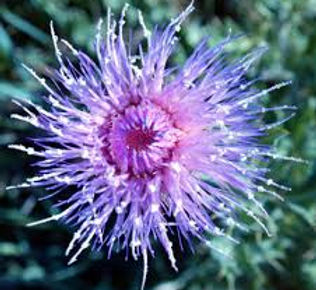
WELCOME TO
Biology 250
or select another flower to view
A native plant of the Dakota prairies, wavyleaf thistle should not be confused with the noxious Canada thistle that infests our cropfields and gardens. Wavyleaf thistle is found on dry open soil from British Columbia to Texas and eastward to Michigan and Iowa, at elevations up to 9,500 ft.
This thistle has rose-purple flower heads that may be over two inches wide and an inch and a half tall. For floral beauty, these heads contrast nicely with the leaves and stems that are whitish gray because of a covering of wooly hairs. However, most people object to the sharp yellow spines that project from the intricately cut leaves and the sides of the flower heads. The thick perennial taproot of wavyleaf thistle penetrates deeply into the dry prairie soil. At maturity, the airborne seeds with their feathery bristles are termed thistledown.
Wavyleaf thistle is avoided by livestock, but does not seem to increase in heavily grazed pastures, regardless of this obvious competitive advantage over more palatable plants. The thick roots of wavyleaf thistle were cooked for food by several tribes of native Americans. Thistledown is relished by birds for food and nest linings.
Cirsium undulatum
Weavy Leaf Thistle









